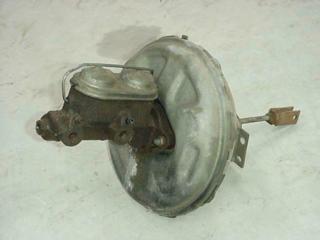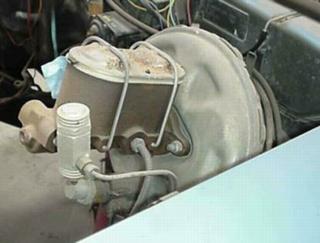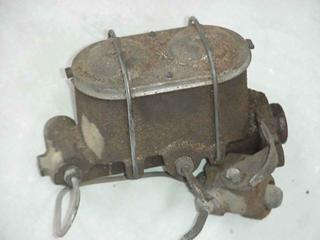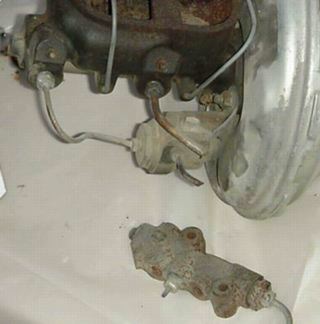 67
DRUM BRAKE
67
DRUM BRAKE 67
DRUM BRAKE
67
DRUM BRAKE
 MY
67 WITH A FOUR WHEEL DISC MASTER CYL
MY
67 WITH A FOUR WHEEL DISC MASTER CYL
 MASTER
CYLINDER
MASTER
CYLINDER

Also used on cars, pickups, in the 70's
 CORRECT
69 MASTER CYLINDER
CORRECT
69 MASTER CYLINDERThis is the correct short type 69 disc brake master cyl
This is a 69 disc brake master cylinder and booster. The brake metering or "hold back" valve is attached. It's hard to see, but there is a rubber boot on the right hand side that you have to press to allow brake bleeder pressure to go to the front calipers for bleeding.
Below this would mount the brake warning switch. The proportioning valve would be mounted on the side of the frame rail below the driver seat.
The valve below is called a combination valve. It is found on 1970 and later GM cars.
It does three jobs, metering, proportioning, and brake light switch. It has a rubber tip on the left end for bleeding, similar to the valve above.
If you are converting to discs, use the combination valve.
Master cylinder the front piston is held in position by a small bolt in the front fluid reservoir. The two small holes are the vent, and replenishment ports. Note that the front spring is weaker than the rear spring, this would cause the front piston to bottom out first when bench bleeding. It takes about 20 lbs to even start compressing the rear spring. This might give a slight front bias to the brake line pressures, but not a lot.